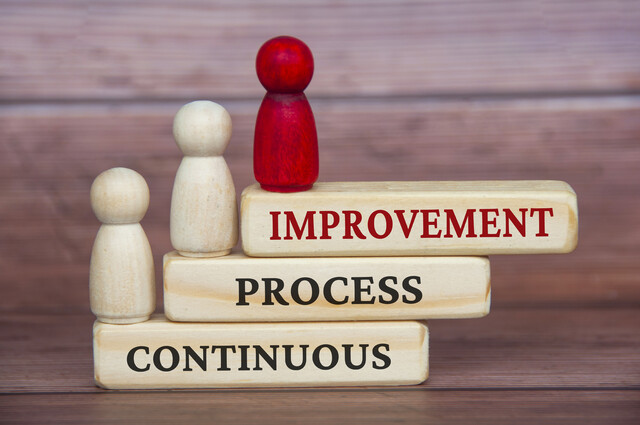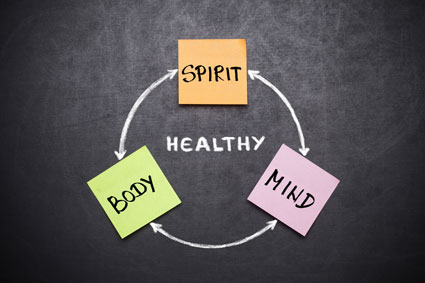In an informational speech, the body of the speech contains the information that the audience is expecting, and it must be delivered using an organizational structure. In a motivational speech, the body is where the speaker will emotionally connect with an audience and prompt them into action.
Most professional speech writers agree that the body of a speech should be written first, before you decide on an appropriate opener. Approximately one third of the entire speech writing process should be spent on writing, one third should be spent on doing your research into the audience and your topic, and the final third of your time should be spent on revising, editing, and making a few final adjustments.
Let us take a detailed look at the process of writing the body of your speech.
Preparation
This is the stage where you will research your topic, analyze the audience, decide on the tone of your speech (formal, informal, and so on), clearly define the speech's main message, and think of general ideas to be included in your speech. There is no substitute for this stage it must be completed, or your speech will not be as effective as it could be.
Gather Your Material
With your speech's main message defined, it is time to gather your facts, figures, evidence, and other supporting material for your speech.
First Draft
Ask for Feedback
Ask someone to read your compete first draft, someone who will give you honest feedback. Ensure the person you ask will be forthright in their comments. Getting good feedback is an extremely important part of the writing process.
Editing and Proofreading
With feedback in hand, start editing your speech. Make any changes that you think are appropriate and incorporate the feedback you received. Some feedback you receive might not be something you want to hear. You have to cast aside your pride occasionally to ensure that your speech is well written. The editing process should be finalized with a round of proofreading, checking grammar, spelling, and making any necessary adjustments.
During the editing phase, you must make some decisions about what stays in the body of your speech and what must be deleted. It is often difficult for someone who is an expert on a subject to cast aside a particular fact, story, or section of a speech. To them, it is all important. It is all relevant and interesting. However, in reality, there is only so much time that an audience's attention will be at full capacity. The body of your speech is where you need to make concessions; the body must be compact and concise as possible. If you feel that a particular fact is vital, you may consider condensing your comments about it and moving the comments to the conclusion of the speech rather than deleting them.
When writing the body of your speech, you might consider using a cause and effect framework for the presentation of your ideas. This structure is particularly useful if you are discussing events that have occurred and the consequences or results of these events. For every event that you describe in your speech, make sure that you cover, in appropriate detail, how each event was caused as well as the consequences of each event. This type of framework also helps to set the context of each event for the audience. The audience will like to know the reasons why something happened as well as the outcome.
If you are giving a motivational speech, the framework of problems and solutions might be a better choice. All motivational speeches are written to motivate an audience into action, and that often means prompting the audience to buy a product, information, or service that offers a solution to a problem. Naturally, the speech should focus on the problem at hand, and the solution that you are offering. Moreover, to make the speech more powerful, focus on other problems, if possible, that also could be solved by the solution that you are offering. The audience will feel reassured if they know that the solution you are offering is versatile and can be applied to multiple problems.
Ensure that the body of your speech contains an adequate number of comparisons. An audience's image of your product, information, or service is always better understood if they have something with which to compare it. This is especially important if you are trying to motivate an audience to purchase something that they have never owned before or to understand a concept that they have never considered before. They need comparisons to familiar objects and familiar points of reference. Comparisons are very powerful rhetorical devices and no speech should be without them.
As you move from one fact to another or from one section to another section of your speech, always ensure that your audience can understand their interconnectedness. If you are delivering a speech, which contains facts, these facts all relate to one another, or else they would not be in your speech. Moreover, your audience might not understand the connection. Use transition words in your speech to help the audience know that you are connecting two parts. Some examples of transition words and phrases are listed.
-
"As an example."
-
"Consequently..."
-
"As a result."
-
"In addition."
-
"As a matter of comparison."
-
"In summary."
The conclusion of your speech needs to accomplish three main goals.
1. To restate your main message.
2. To prompt the audience to perform the desired action, in the case of a motivational speech, or have the proper understanding, in the case of an informational speech.
3. To give the audience a sense of completion. Ideally, you do not want them to have many unanswered questions.
In an informational speech, you will review the principle elements of your main message in your conclusion. Do not simply repeat facts using the same level of detail that you used in the body of the speech. By this point in the speech, the audience will understand your premise, now they simply want a summary of your points.
Give one final example or repeat some portion of your most compelling evidence. If you have repeatedly used a catchy phrase or slogan throughout your speech, make sure that you use it in your conclusion. Place yourself in the audience and ask yourself how you can be made to feel comfortable in understanding the information presented or more comfortable in doing the desired action. If you view your speech from the audience's perspective, you will be able to create a very powerful conclusion to your speech.
Speaking to Entertain an Audience
Speeches whose purpose is to entertain are usually shorter than other types of speeches, sometimes even shorter than the 20-minute standard that is followed by most pubic speakers. The audience does not want to hold their attention for a long period. They want to be entertained with a quick, light, and sometimes humorous speech. Just as you do with all other speeches, you begin your research with the audience in mind. What is the occasion that calls for this speech? Who will attend? Finally, what is the purpose of the speech? Even if the main purpose is to entertain a group of people, there may be an additional purpose that needs to be taken into consideration.
After you have determined your speech's purpose, you clearly understand the occasion, and you know the demographics of the audience, then it is time to develop a theme for your speech. You do want your speech to have a central theme. There is a difference between a speech and a standup comic routine. Unless the audience is expecting 20 minutes of pure comedy, it is not appropriate to deliver a speech that is entirely devoid of a simple message. For an entertaining speech, you theme should have the following characteristics.
-
Lighthearted. Your theme should obviously be light. Do not discuss weighty topics, your personal issues, opinions, or other more complicated topics. Be optimistic at all times.
-
Uncomplicated. If you have been asked to deliver a speech for your annual company outing, for example, there may be some business that must be mixed with pleasure. The rule of thumb, though, it is keep the business uncomplicated. There is no need to go into detail when a quick summary will suffice.
-
Use Stories. Entertaining speeches should be filled with anecdotes. These anecdotes could be about an audience member or several of them, or a personal story. If your stories are about an audience member, they should always be complimentary.
If you are comfortable incorporating humor into your speech, it would be appropriate to do so. However, if you are not typically the type of person who easily tells jokes or if you are regarded as a more serious person, attempting humor could be risky. Do not attempt humor unless you are comfortable doing so. The audience will not be entertained by poorly delivered humor.
The point and proof structure is used for a speech that contains one or several main points or objectives. Each point is delivered, and then the proof, or evidence, is discussed in support of the main point. This structure is very similar to the structure for an informational speech, but the evidence is comprised of anecdotes rather than facts. Here is a typical order of presentation for delivering such a speech.
- Open your speech with a short story. If you can incorporate humor at this point, feel free to do so.
- Explain why you have chosen this story and how the rest of your speech might relate to it. By doing this, you are explaining to the audience how the speech will be organized. Even in an entertaining speech, the audience likes to know this.
- Tell short anecdotes that support your main story. You might have opened your speech, for example, with a heroic story of how one particular employee worked very hard to accomplish a major company initiative. At this point in the speech, you will now tell shorter stories (anecdotes) that support your main story (your main point).
- Close your speech by repeating your main point, perhaps reminding the audience of your opening story. It would also be appropriate at this point for another anecdote that is quite memorable.
The second structure is really a spoof of the Point and Proof structure. You open with a story, just as described above, but rather than presenting anecdotes that support your main story, you present stories that are meant to be sarcastic, humorous, or otherwise not to be taken seriously. For example, your opening story might be about an employee who was recently given a prestigious award for project management, and one of your first anecdotes could be about how he or she used their skills to get the paper clip out of the printer at work. Such a speech is complimentary to an employee but you must be careful to alternate between humorous anecdotes and ones that are slightly more serious. You do not want to minimize the importance of your main point.
Regardless of your speech's specific purpose, the main objective of an entertaining speech is to build good feelings among the audience members. The following are guidelines to achieve this goal.
-
Always speak from the audience's perspective. Do not make this a speech about what you think. The speech should be on behalf of the audience. You want to ensure that they feel as if they are an integral part of the story.
-
Use an emotional appeal. Sometimes a little emotion, even if it brings the audience to tears of joy or pride, is an extremely effective way to entertain an audience. Make your stories as personal as possible without crossing the line of using an appropriate level of privacy.































